
Overcoming the mystery elements of the original Predator seemed like an impossible task, but Predator 2 has more to offer than most give it credit for
The action sci-fi genre was epitomised by three movies during the 1980s, each featuring iconic characters who would spawn sequels, prequels, trilogies, quadrilogies and whole cinematic universes. You could probably add Robocop to that list, but The Terminator, Aliens and Predator are the three that stand tallest in terms of cinematic shelf-life. Robocop 2 derailed Alex Murphy’s commercial potential before Orion’s punt at cultural marketing salvation Robocop 3 all but killed it, and don’t get me started on 2014’s wholly unnecessary and poorly received reboot, a transparent cash-in released at the derivative phenomenon’s oversaturated peak. Few franchises escaped the dreaded 21st century reboot treatment, and few films were as underwhelming as José Padilha’s reimagining of Paul Verhoeven’s satirical cyberpunk classic. It was all so hollow and unnecessary, an unfortunate sign of the times.
To be fair, those other franchises would tread something of a rocky road too. The Alien franchise probably edges it in terms of quality output, Ridley Scott’s moody, knife-edge original evolving into James Cameron’s balls to the wall successor, an outer space onslaught very much in the action mode that refused to jeopardise its predecessor’s horror elements. Alien 3 probably tips the scales in favour of the franchise, David Fincher’s stripped-back threequel disappointing some and intriguing others, but it was a slippery slope from there. The Terminator franchise dropped the ball with the dizzyingly underwhelming Terminator 3: Rise of the Machines, which was never going to live up to James Cameron’s staggeringly about-turn sequel, a cultural phenomenon that somehow managed to match his jaw-dropping, horror-infused original in a way that was familiar yet fresh. As soon as the series dropped its adrenaline-induced, stalk-and-slash simplicity for expansive, world-building action, it all fell apart rather dramatically.
That leaves the Predator franchise, which most will agree has proven the most underwhelming overall. In comparative terms that statement could have been made as early as 1991 based on the status of Aliens and Judgement Day, which many have argued are superior to the movies they succeeded. Beyond that, the series succumbed to the much-anticipated but demoralizingly cack-handed Alien vs Predator crossover series, a cinematic venture hinted at as early as 1990. The returning character’s wall of trophies spied in Predator 2 features a mouthwatering ‘Easter Egg’ in the form of a xenomorph skull, suggesting that the most proficient sport killer in the universe managed to overcome the most proficient killer, well, ever, a tantalising prospect for moviegoers. It would be fourteen years before such a concept materialised, a long time to build unrealistic expectations, but Alien vs Predator and Alien vs Predator: Requiem were enough to disappoint even the most loyal fans, tarnishing two franchises in one fell swoop. As much as it saddens me to suggest, that barely-glimpsed teaser with the xenomorph skull remains the most intriguing moment in the entire crossover debacle.

In the hands of Lethal Weapon scribe Shane Black and cult writer/director Fred Dekker, 2018’s The Predator, a homage to 80s action sensibilities that managed to feel mildly fresh, would build on Nimrod Antal’s intriguing yet mildly deflating Predators, but Predator 2, which has experienced something of a renaissance in recent years, seems to be the sequel most remember fondest ― ironic since it put the franchise down for an unceremonious 8-count. The fact that the ever popular Schwarzenegger pulled out of the project due to a last-minute intervention from James Cameron was a huge blow for the studio’s elite blockbuster ambitions. Cameron figured that Arnie starring in Predator 2 would have an impact on the schedule and box office power of Terminator 2, a project the filmmaker had been working on for many years that was set to go into production. It was a case of bad timing for 20th Century Fox and Silver Pictures.
This is what I call the speech, kid. It’s the only one I got and I only give it once, so pay attention. ‘Til now, it’s all been fun and games. “Cops and robbers,” Dunkin Donuts. But you’re in the shit now. Metro Command is a war zone.
Lieutenant Mike Harrigan
Arnie’s decision to swerve Predator 2, despite it being a colossal property in its own right, proved the right one for an actor renown for his commercial savvy. It also paid dividends for Cameron, who inspired a certain degree of loyalty having fronted Arnie’s breakthrough role as the fearsome T-800, even convincing the initially dubious star to turn to the dark side following his heroic turn as Conan the Barbarian. While Predator 2 managed $57,100,000 on a budget of approximately $30,000,000, Arnie’s star power brought in a whopping $463,300,000 that same year following leads in Paul Verhoeven’s high-tech Phillip K. Dick adaptation Total Recall and Ivan Reitman’s comedic curveball Kindergarten Cop. A year later, Terminator 2, then the most expensive film ever made, would gross a whopping $520,900,000 worldwide, making the likes of Predator 2 and even Total Recall seem dated by comparison with its incredible stunts and groundbreaking special effects. McTiernan, an action artiste at the very top of his game in 1990, also ditched the project, the potential pitfalls of sequelitis leaving him swinging for the proverbial trees. Interestingly, the sequel-shy filmmaker also turned down the chance to direct Die Hard 2: Die Harder in favour of the Sean Connery led spy thriller The Hunt For the Red October, eventually relenting five years later with Die Hard with a Vengeance. Predator 2 was like the prettiest girl at the dance who’d suddenly been curtailed by a giant zit.
Enter Jamaican-born, British-Australian director Stephen Hopkins, a relative rookie whose only feature on US shores was the universally derided A Nightmare on Elm Street 5: The Dream Child, a ridiculous yet jarringly lurid horror sequel that transformed an already waning Fred Krueger into little more than a pantomime villain. Visually, the film was a knockout on occasion, but mystique-crushing backstories and a further descent into commercially calculated formula proved the death knell for Krueger as a commercial giant. Not that it mattered to New Line Cinema or Hopkins, who with a box office of $22,100,000 million could now add the most successful slasher of 1989 to his CV. It was a huge commercial comedown following 1988’s wildly successful A Nightmare on Elm Street 4: The Dream Master, then the most successful instalment in the franchise with a box office gross of $49,400,000, but it was enough to land him yet another high stakes gig in the first Predator sequel, which, handled correctly, had ‘hit franchise’ written all over it. It was a mouthwatering prospect for the then 32-year-old, who must have been doing something right. Imagine emerging from obscurity to headline two major properties in the space of a year. It’s almost unheard of.

Of course, this being Hollywood, there’s always an element of ‘be careful what you wish for’. It was a tough ask to follow McTiernan’s jungle-bound classic, much more than the already creatively moribund Nightmare series, a diluted concept that by 1989 depended almost entirely on practical effects set-pieces. Unlike Krueger there was much more to explore with the Predator character since the original had revealed very little in terms of purpose and origins. And let’s face it, the hardest movie to make in creative terms is a blockbuster sequel, particularly one that follows an innovative, highly respected classic like Predator, a movie bolstered by a visionary genre director, an innovative screenplay, a larger-that-life cast and the most unique, commercially viable action star on the face of the planet. Based on those elements alone, a simple re-tread would not have sufficed, but audiences also expect more of the same, a precarious balancing act made even more hazardous by fickle viewers who expect the impossible despite a quiet acceptance, an almost vehemence, that nothing can or will live up to the original. Moviegoers can be, and usually are, a particularly difficult, nigh-on impossible breed.
I’m not one of those people who has to compare every last facet of a sequel to an original movie, usually going in with an open mind, but the shadow of some films loom ominously large, so let’s address the Predator-shaped elephant in the room. Predator thrived on its sense of mystery, opening with a typical action flourish that embraced convention in order to subvert it. Placing us in the arms of the most dependable biceps in Hollywood, it immediately upped the ante by unleashing a barely glimpsed threat that was alien to our action vehicle sensibilities. Going from straight-up actioner to jungle-bound sci-fi to stalk and slash horror, McTiernan produced a mesmerising matrimony of genres that left us lost and lurching like the movie’s GI Joe cast, a well-oiled platoon of seeming invincibles who went from infallible tactical expertise to being completely and utterly out of their element in the blink of an eye. It was a breathtaking ride that paused for no one and apologised for absolutely nothing.
Like the most memorable horror characters, the predator’s reveal was excruciatingly slow, introducing audiences to what at the time were some of the most unique and revolutionary special effects ever committed to celluloid. Semi-witnessing this chameleonic entity manoeuvring through the jungle like kaleidoscopic fragments of refracted light, we were unable to ascertain exactly what we were supposed to be fearing. At the same time it utilised the slasher POV presence, allowing us to see, with chroma key technique confusion, what the predator sees. An unidentified threat is one thing, but stepping into its shoes, an experience that proved even more surreal, was a novel stylistic choice that asked all the right questions. What on Earth was this thing, and where, other than Earth, did it come from?

After Predator‘s finale let the visual cat out of the bag, the sixty-odd minutes of excruciating tension that preceded evaporated into the awe-inducing spectacle of a dreadlocked creature that’s perhaps only second to H.R. Giger’s xenomorph for pure, visual prowess, and even that’s up for debate. There’s nothing worse than a beautifully constructed reveal let down by shoddy costume design and practical effects, but Predator more than lived up to its dramatic clout on an aesthetic level, the whole experience wowing a generation of action, horror and sci-fi fans. Without that build and the eye-melting reveal that followed, Predator wouldn’t have proved half as impactful, but you can only reveal once. Take away the mystery and you’re dealing with a different prospect entirely.
Quite the obstacle for Hopkins, who already had the odds stacked so mercilessly against him. Fundamentally speaking, Predator 2 had very little chance of surpassing, or even living up to a movie that relied so heavily on mystery, that introduced us to one of the most iconic and enduring characters in the history of cinema. As a viewer, the fun was experiencing, as our mostly doomed cast did, a sense of the unknown, but much like Aliens before it, there’s still a lot of fun to be had as a smug insider, as someone who knows exactly what kind of threat the sequel’s characters are dealing with. Instead of mirroring their fear and incredulity, we kind of project it onto them. When a character who deserves to die notices a flicker of refracted light or the bright red speck of a laser sight, we take amusement, almost pride in knowing that, when it comes to a bad, no-nonsense motherfucker like a predator, poetic justice is but a grisly, blood-based Jackson Pollock away. As for the film’s protagonist, it makes us root for them that much more. We can’t wait for that person to discover what we already know or see exactly what they’ll do to survive.
With Schwarzenegger out of the picture, the director’s first task, as monumental as any he faced, was to find the right leading man. The studio’s original idea was to pair Dirty Dancing heartthrob Patrick Swayze, who had recently endeared himself to the male demographic as philosophical bar ‘cooler’ James Dalton in Rowdy Herrington’s cult classic Road House, with a returning Arnie. Fox were looking to tap into the ever-burgeoning buddy cop genre recently popularised by Lethal Weapon, a state of the art action series that Predator 2 producer Joel Silver had already achieved huge success with. After that fell through, Silver and Hopkins turned to another up-and-coming action star, someone who would go on to become one of the most disagreeable and universally reviled personalities the industry has ever known.

It seems like you can’t turn a corner without someone having a pop at Under Siege star Steven Seagal, whose reputation goes beyond sheer ego, and Hopkins’ experience was no different. Legions of female co-stars have gone out of their way to warn of Seagal’s disreputable aura. Even Jean-Claude Van Damme threatened to kick his ass at a star-studded party thrown by Sly Stallone, Seagal quickly slipping out when confronted. He also had a reputation for meddling with material for preposterous reasons at the height of his fame. While headlining buddy cop flick The Glimmer Man in 1996, a typically delusional and self-satisfied Seagal subjected an already heavily edited screenplay to further interference relating to his spiritual beliefs. According to co-star Stephen Tobolowsky, a reborn Steve no longer wanted to kill villains in movies (which is presumably why he went on to kill them for decades thereafter) and had to be convinced that his murderous character would be reincarnated as something pure thanks to his divine hand, a pandering notion that seemed to do the trick ― at least temporarily. After many a sleepless night battling with his own conscience, the ass-kicking multimillionaire rallied to have the outcome changed yet again, even providing alternate dubbing for a hastily tacked-on ending that was never used. You just couldn’t write this shit!
In regards to Predator 2, Seagal was interested, but only if he could portray a CIA psychiatrist and martial arts expert instead of the everyday cop Hopkins and writers Jim and John Thomas had intended, an honourable character worthy of the predator’s equally honourable approach to hunting. Obviously, Seagal doesn’t quite fit that profile, something Hopkins would quickly discover after a rather peculiar meeting at the star’s mansion. “I had to go and have a meeting with [Seagal] at his house, which was one of the craziest afternoons I’ve had,” the filmmaker would recall. “…And it was bizarre… he’s a very unusual, twisted kind of guy, and in the end I couldn’t see myself doing it with him. It didn’t feel right, you know, he wasn’t the kind of hero [I’d imagined]. I thought he’d turn it into a kind of cheesy… you know. [Predator 2] has plenty of cheese, but it’s kind of cool cheese. He was desperate to do it. I went up to his house. He crushed my hand and took me into a room where all the walls were covered with guns, and he told me how he wanted to play a CIA psychiatrist who was also a martial arts expert and carried a gun. I listened to him for a long time and he was clearly a little crazy. I said, ‘this is different to the way we’re going so I guess we shouldn’t do it’. And then he became really keen to do it, and he threw his arm around me on the way out and he said, ‘I want you to come to my ranch in Santa Barbara. I’ve got a grenade-launching range there. So we can go and launch grenades together… I’m not a fan of his.”
The actor who eventually replaced Schwarzenegger was both the most and least qualified for the job. By 1990, the hugely versatile Danny Glover was already action movie royalty thanks to memorable support roles in Lethal Weapon and it’s equally brilliant sequel. It’s not like he had to do much to propel himself to headliner status since Glover wasn’t your typical token black sidekick, receiving almost equal billing in both instalments. Mel Gibson was technically the film’s heartthrob lead, but Lethal Weapon‘s central plot centred on Glover’s Roger Murtaugh, Lethal Weapon 2 giving him an equally meaty slice of the action with a semi-comedic role as an apartheid activist. Unfortunately, not everyone was so enlightened. Despite Eddie Murphy’s seminal turn as Beverly Hills Cop‘s Axel Foley back in 1984, an African American lead was still a rarity in mainstream Hollywood for commercial reasons. Many southern states still refused to screen movies with interracial relations, which is partly why both Murphy’s Foley and Glover’s Lieutenant Mike Harrigan failed to register even a whiff of a love interest.

Despite society’s ignorance, Glover was inspired casting. In a film of familiar faces and overblown scenarios, the actor stands tall, becoming a relatively nuanced buoy in a sea of grandiose stereotypes (some of those costumes are Road Warrior opulent). That’s not a criticism of a film that knows exactly what it is, but you realise the kind of talent you’re dealing with whenever Glover commands the lens. He’s so effortlessly relatable, and despite his relative lack of mobility he makes Seagal, a trained martial artist, look like amateur hour. Harrigan is no Murtaugh, a character the screenplay attempts to tap into when it comes to delivering classic Lethal Weapon retorts, but Glover forges an interesting variation who depends more on dark passion and no-nonsense policing than warm camaraderie, while a lesser actor would have shrunk under expectation. As Harrigan, Glover exudes something of an insular, neo-noir vibe, sifting through blood and viscera with a battle-hardened nonchalance that borders on obsession. Without a black love interest in sight, his character is stripped to the bare bones, a die hard cop forced on a path of vengeance after a long-time friend and colleague is unceremoniously murdered by the mysterious newcomer wiping out the city’s leading gangs for reasons that are unclear. Ultimately, there’s no room for warmth in Predator 2 and the violent future it inhabits.
Smartly, perhaps inevitably, Predator 2 moves the action from the South American wilderness to the moral decay of L.A.’s urban jungle, a stunning opening shot revealing the city’s raging skyline after swooping temporarily through familiar greenery, a cute play on audience expectation that immediately sets the film apart aesthetically. It’s 1997, the city is deodorant ad sweltering, and gang warfare rages uninhibited, a concerted Robocop vibe punctuated by a cartoonish media mired in sensationalism. The guy who plays controversial anchor Tony Pope, a fly in the ointment of police procedure, is the late Morton Downey Jr., an equally controversial American talk show host who was the Jerry Springer of the late 1980s, even headlining a segment of ‘Piper’s Pit at 1989’s Wrestlemania V. Pope is slimy, unscrupulous and dripping with faux-outrage. Again, it’s inspired casting. Like real-life gameshow host Richard Dawson in The Running Man, Downey Jr. brings a sense of authenticity to a character caked in deceit, a winning irony that requires little-to-no adaptation. Both were somewhat out of their depth in acting experience terms, but there wasn’t an actor alive who could have improved on those performances. It’s a case of better the devil you know.
The film’s supporting cast are equally impressive in terms of star power. Arnie may have given the project a wide berth, and you can argue that there are no bona fide superstars on display, but the film features a whole host of familiar faces, both major and minor, who could fill an encyclopaedia of 80s action lore. Even Steve Kahan makes a blink and you’ll miss him appearance as a cop under Harrigan’s command, a surreal experience for anyone who knows him as Murtaugh’s world-weary superior Captain Ed Murphy from the Lethal Weapon series. Licence to Kill‘s Robert Davi also makes a relatively brief appearance as the jarringly fearsome Deputy Chief Phil Heinemann, a man up to the teeth in Harrigan’s Dirty Harry methods, the very same that indirectly lead to Detective Danny Archuleta’s incident-inciting death. Everywhere you look there are familiar faces to raise the nostalgia factor of a movie that is very much of its time and for its time.

Further up the card we have a deliriously hammy Bill Paxton as hotshot detective Jerry Lambert, a brash, chauvinistic, but ultimately good-hearted big mouth transferred to the infamous Metro Command precinct at his own request (did I mention he was recklessly brave too?). Paxton is mostly there as comic relief, something he excelled in as perennial douchebag Chet in John Hughes’ cult teen comedy Weird Science. Here, he’s a little thin thanks to a screenplay that can be occasionally stilted, his sexist tendencies not half as endearing, or forgivable, more than three decades on. Latino firecracker María Conchita Alonso fares much better working within such a limited creative spectrum, shedding the shackles of action orthodoxy in a thrilling scene involving a subway and an unplanned pregnancy. Alonso’s Detective Leona Cantrell is a fearsome pit bull until faced with Kevin Peter Hall’s ruthless city hunter, a scene that not only matches most of what the original movie delivered in terms of breathless action and suspense, but also expands on the creature’s intentions and all-round mythology.
That scene, shot on the L.A. subway before it was even open to the public, shows the predator at its most relentlessly savage. It also reveals a merciful side that leaves the character in a moral grey area that’s atypical to alien killers, one teased in a genuinely heart-in-mouth moment when the confused warrior takes aim at a kid carrying a toy gun. Would the creature have opened fire had the boy’s mother not intervened? It’s certainly a possibility given the alien’s inability to make a fool proof distinction. One thing we know by this point is that gun smoke is to the predator what a drop of blood is to the hunting shark. The original Predator revealed glimpses of the creature’s moral persuasion thanks to captured female insurgent Anna Gonsalves, the unarmed woman left unscathed after an otherwise bloody meeting with the jungle’s semi-invisible killer, but in the sequel the character’s intentions are laid out in no uncertain terms. After a brief comedy moment in which a gaggle of civilians draw weapons on a rabble of thieving nogoodniks, the predator arrives in a maelstrom of savagery, wiping out an entire train of mostly innocents in a superbly lit and skilfully captured sequence of pure, unadulterated chaos. The train’s one survivor, Alonso’s Cantrell, looks to be next on the menu, particularly since she’s also carrying a weapon, but when the alien’s heat-censor technology detects an unborn child, all bets are off. If you’re in the game, you’re fair game, but this isn’t a xenomorph we’re dealing with. The character has a moral code that’s worthy of our respect, transcending classic notions of good vs evil.
[to the approaching predator tribe] Okay, who’s next?
Mike Harrigan
Gradually, Harringan begins to realise that there’s much more to this mysterious killer than the multitude of skinned, strung-up bodies baffling Metro Command suggest. Gary Busey’s Special Agent Peter Keyes, having consulted with Predator‘s two survivors, also knows a fair bit about the stealth assassin running roughshod over humanity’s most ruthless killers, so much that he heads a special task force supposedly investigating a drug conspiracy as a cover-up for his real intentions. Harrigan and Keyes begin as a typical renegade/authority figure paradigm, but after Harrigan proves his mettle, getting closer to the truth than the task force ever imagined he would, Keyes invites him to the party. Busey is another Predator 2 highlight, his transition from stuffed shirt bureaucrat to selfless martyr somewhat refreshing in a film that sticks firmly to type for the most part. He also has the privilege of the film’s most memorable death, a blunt sawing-in-half that sticks out amid the almost relentless destruction dished out by our eponymous killer.

The movie’s tête-à-tête is also a doozy. Physically, Harrigan is no match for the towering predator with an almost insurmountable arsenal, even paling to Schwarzenegger’s musclebound profile, and it does lack the fitting primal elements of Predator‘s iconic face-off, but our equally fearless protagonist gets by on old-fashioned, city cop instincts. Their prolonged final battle, from the city rooftops to the bowels of a Giger-esque spaceship via an old lady’s levity-inducing bathroom, is a bone-crunching, neon puncturing, pussy face spouting classic. The predator even loses an arm prior to its death on eye-catchingly designed home turf. Our two warriors, who grow to earn each others respect, knock lumps of shit out of each other during a final act that reveals an entire predator tribe rather than signing off with a macho whimper, creating an open canvas for the film’s successor. Harrigan is spared too, despite bumping off one of their own. These aren’t mindless killers we’re dealing with. For them there’s honour in battle, their parting gift of a 1715-inscribed pistol hinting at the centuries-long heritage of a species who have travelled the length and breadth of the universe in search of cranial trophies. Predator 2 may have waved goodbye to first-time novelty, but it sets the groundwork for characters who are very much deserving of further exploration.
Predator 2 was unapologetically violent back in 1990 and still holds up as an action vehicle for the most part. It also features superior practical effects to the original, the kind that benefit from some rather excellent direction. Particularly impressive is a scene in which Harrigan holds a clandestine meeting with drug kingpin and spiritual shaman King Willie, only for the lurking predator to appear ready for battle. The creature’s introduction, trawling through acrid back alley puddles under partial invisibility, looks just as impressive in 4K, Willie’s decapitated head, frozen in an eternal scream of anguish, beautifully and deceptively captured. Going into the movie after all these years, I was concerned about the predator’s visual overexposure, about the dumbing down of a truly iconic character built on barely visible intrigue. I needn’t have been. Predator 2 may lack the mystery factor of its predecessor, but the predator is such an intriguing character to spend time with, both aesthetically and in terms of its expanding mythology. There’s almost as much pleasure to be had in discovering more about a character who once clung so inextricably to the shadows. Maybe one day we’ll get the origins story the franchise so richly deserves. With the expanse of space and time to traverse, the possibilities are endless.
Director: Stephen Hopkins
Screenplay: Jim Thomas & John Thomas
Music: Alan Silvestri
Cinematography: Peter Levy
Editing: Mark Goldblatt &
Bert Lovitt










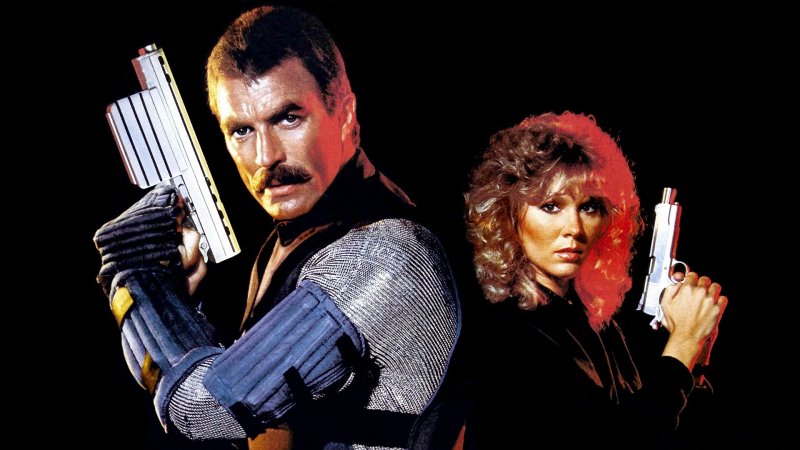





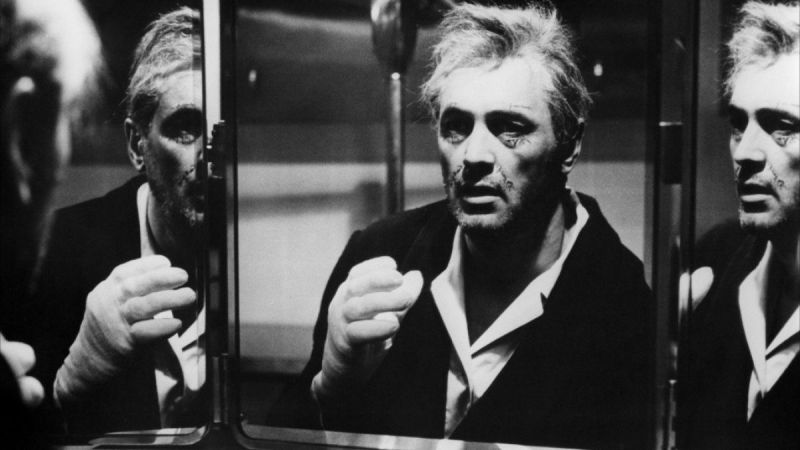

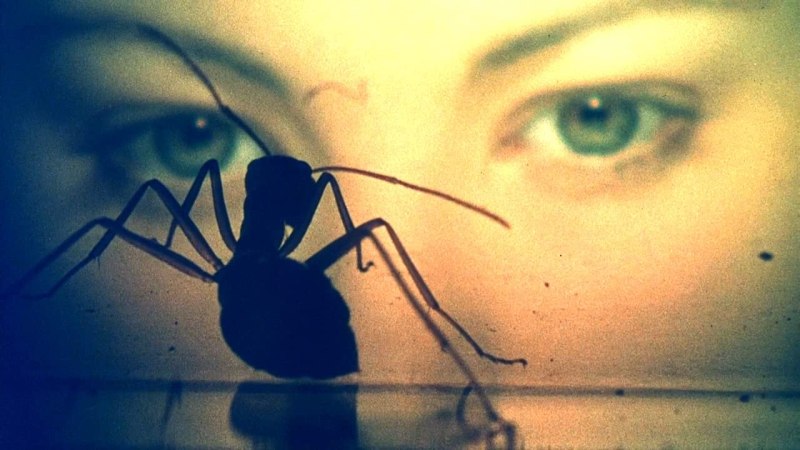
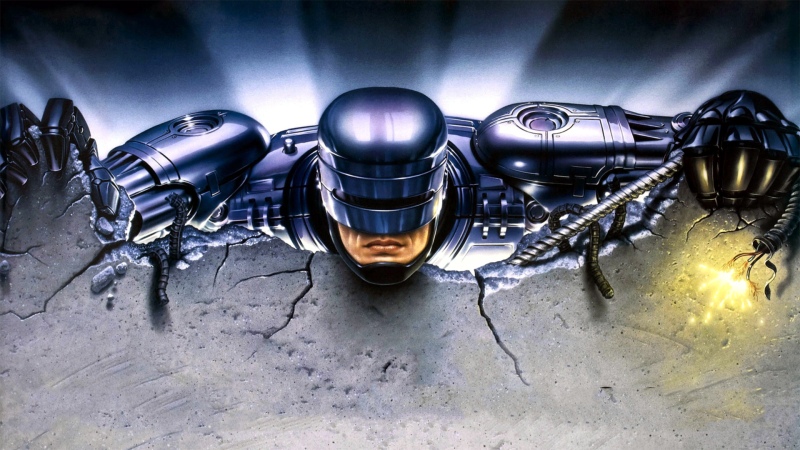

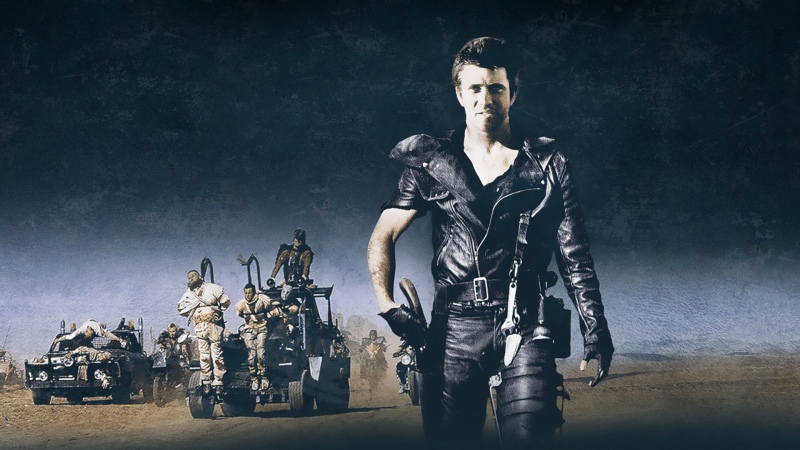

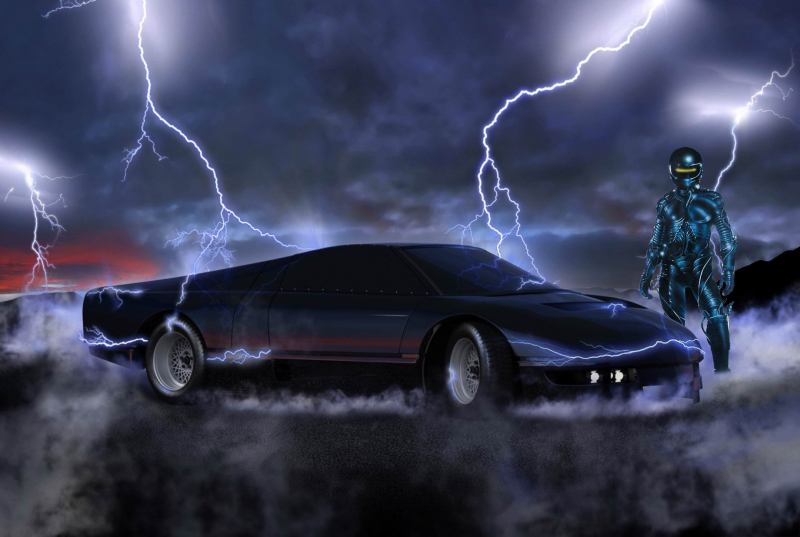







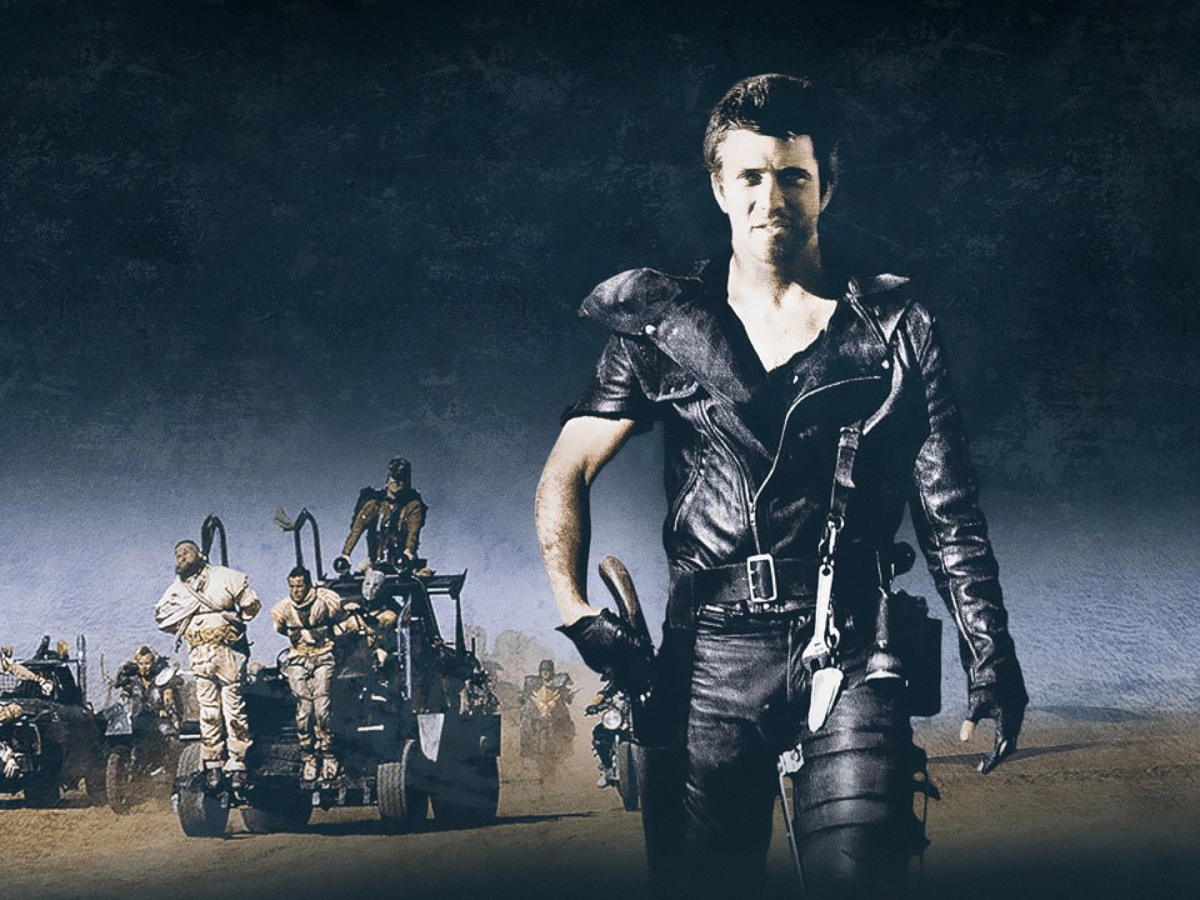






Predator 2 could never surpass the original film but I must admit I’ve always loved this ultra violent sequel. Its so far removed from the original film but the shift to a the concrete jungle of LA really works. The plot might be window dressing for the big set-pieces, but the cast is great, and the new additions to the Predators wagons and history are all superb. Considering the films trouble production history its a wonder it ever got the screen. Predator 2 is a very underrated gem, and considering where the franchise went next – its masterpiece.
LikeLike
Hi Paul
I must say I have to agree.
The plot is filler, the characters pretty thin for the most part, but I really dug it this time around, despite apprehensions about overexposure and a lack of mystery.
Glover’s presence elevates the film’s weaker elements and some of the SFX and set-pieces are really quite impressive.
Not the original, but a fair ride with some interesting developments in regards to the predator.
LikeLiked by 1 person
For sure, its such an underrated film. Predator 2 features some great new elements and Glover was superb in the lead role. The SFX are also especially good, particularly during the fight with the Voodoo Posse, and that Predator Vs King Willie still chills to the bone. Great in depth retrospect of Predator 2, really enjoyed reading it. 🙂
LikeLike
Thanks!
I really enjoyed researching this one. I mean, that Seagal story about the grenade-launching ranch. Utterly priceless. You couldn’t make it up.
LikeLiked by 1 person
A very enjoyable review and insights into a sequel I rate highly (the Seagal stuff is just nuts!). P2 was such a good film, and managed to emerge from the brilliant shining light of the original with its own special luminosity. Hats off to everyone involved.
LikeLike
Thanks! Appreciate the kind words.
Seagal! Just WOW! I mean, I’d heard stories, but a grenade-launching ranch!!!
I take it that’s where he does most of his profound thinking. 🙂
LikeLiked by 1 person
Great article, P2 was the best sequel up until Prey last year.
LikeLike
Thanks! Yes, I think so. It has aged surprisingly well for the most part, and I love me some Danny Glover, especially in the Lethal Weapon series. He plays a very different character here, even if he is still a cop.
LikeLike